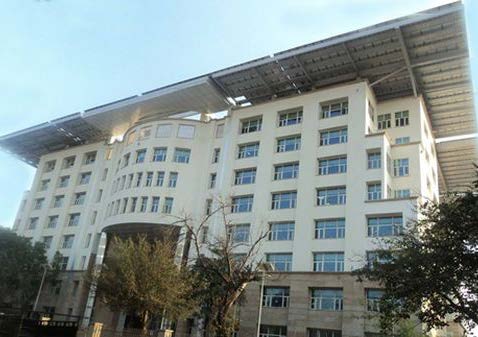India’s Prime Minister, Manmohan Singh inaugurated the country’s first net zero carbon building, the Indira Paryavaran Bhawan in New Delhi’s central government district is the head office of the Ministry of Environment & Forests. It has been designed to accommodate about 1,000 officials. The new building has a solarpassive design and has been constructed from energy-efficient building material. It is expected to be a trend-setter in the country and inspire people towards adoption of green technology.
The $33.7 million environment ministry HQ was built to meet the requirements for LEED Platinum rating as well as the 5-Star standard.
Interesting features include:
Effective ventilation by orientating the building in an east-west direction, separating different blocks with connecting corridors and having a large central court yard.
Total energy savings of about 40 percent through innovative combination of geothermal cooling which uses air convection flows to exchange cool air within the rooms. The design enables natural daylight to provide up to 75 percent of lighting requirements. The building’s lifts have a system to regenerate energy.
The entire building has an access- friendly design for differently- abled persons.
With an installed capacity of 930-KW peak power, the building has the largest roof-top solar system of any multi-story building in India.
Green materials used include fly-ash bricks, regional building materials, materials with high recycled content, with highreflectance terrace tiles and rock wool insulation for the outer walls.
Rapidly renewable bamboo jute composite material has been used for door frames and shutters. UPVC windows, with hermetically sealed double glass. Grass paver blocks to build the pavements and driveway.
Reduction of water consumption by the use of low-discharge water fixtures; recycling of waste water through the building’s own sewage treatment plant; use of plants with low water demand in landscaping; rain water harvesting and use of curing compounds during construction.










